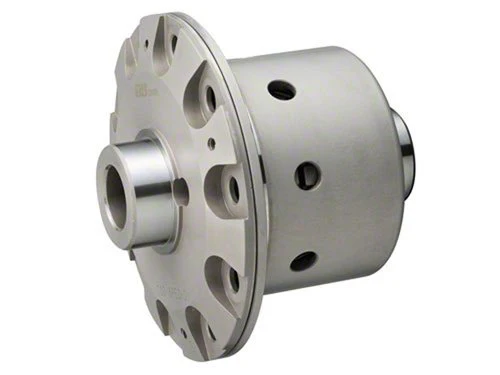OS Giken R200 Install: A Step-by-Step Guide to Upgrading Your Differential
Upgrading your vehicle’s differential can be a game-changer, especially when it comes to handling, traction, and overall performance. One of the most popular and reliable options for enthusiasts is the OS Giken R200. Known for its precision engineering and durability, the OS Giken R200 limited-slip differential (LSD) is a sought-after choice for those looking to enhance their car’s drivetrain. In this comprehensive guide, we will explore what the OS Giken R200 offers, the benefits of installing it, and provide a detailed, step-by-step installation guide to ensure a successful upgrade.
What is the OS Giken R200?
The OS Giken R200 is a high-performance limited-slip differential designed for a variety of vehicles, including those equipped with the R200 rear differential housing. OS Giken, a Japanese manufacturer, is renowned for its racing heritage and precision-engineered components. The R200 model, in particular, is favored by car enthusiasts for its smooth operation, superior traction, and the ability to handle high torque levels. It is often used in vehicles like Nissan’s Z-series, Skylines, and other models that utilize the R200 differential housing.
Why Upgrade to an OS Giken R200?
Upgrading to an OS Giken R200 LSD offers several advantages for drivers who seek better performance on the track or improved handling during spirited driving. Here are some key benefits:
- Enhanced Traction: The OS Giken R200 LSD improves traction by evenly distributing power between the drive wheels, which is particularly beneficial during hard acceleration or cornering. This results in better grip and control, reducing wheel spin and improving lap times on the track.
- Improved Stability: A limited-slip differential like the OS Giken R200 helps maintain stability, especially in high-speed turns or challenging road conditions. This is crucial for maintaining control during aggressive driving or racing scenarios.
- Smooth Power Delivery: OS Giken differentials are known for their smooth engagement and quiet operation. Unlike some other LSDs that may produce noise or abrupt engagement, the R200 offers a seamless driving experience both on the road and track.
- Durability and Reliability: Built to withstand the demands of high-performance driving, the OS Giken R200 is designed for durability. Its robust construction makes it suitable for vehicles that experience high torque levels, making it a reliable choice for modified cars or those used in motorsports.
Tools and Parts Required for OS Giken R200 Installation
Before diving into the installation process, it’s important to have the necessary tools and parts on hand to ensure a smooth installation. Here’s a list of what you’ll need:
- OS Giken R200 LSD unit
- Differential gasket or sealant
- Gear oil (recommended for LSDs)
- Torque wrench
- Ratchet set and sockets
- Pry bar or differential removal tool
- Jack and jack stands or a car lift
- Drain pan for old fluid
- Rubber mallet (for gentle tapping)
- Clean rags and gloves
Step-by-Step Guide: Installing the OS Giken R200
Installing an OS Giken R200 differential can be a complex process, especially if you’re not familiar with working on your vehicle’s drivetrain. The following steps outline the process in detail, helping you to install the differential correctly.
Step 1: Prepare the Vehicle
- Park on a Level Surface: Ensure your vehicle is parked on a flat surface, and engage the handbrake. Use wheel chocks for added safety.
- Lift the Vehicle: Use a jack to lift the rear end of the vehicle and secure it on jack stands. A car lift is ideal if you have access to one.
- Drain the Differential Fluid: Place a drain pan under the differential and remove the drain plug to allow the old fluid to drain completely. Dispose of the old fluid in accordance with local regulations.
Step 2: Remove the Stock Differential
- Remove the Driveshaft: Disconnect the driveshaft from the differential by unbolting it. Make sure to mark the position of the driveshaft flange to maintain proper balance during reinstallation.
- Disconnect the Axles: Remove the bolts securing the axles to the differential. Use a pry bar if necessary to gently dislodge the axles from the differential housing.
- Unbolt the Differential Housing: Remove the bolts securing the differential housing to the subframe. Carefully lower the differential using a jack to prevent sudden drops.
Step 3: Prepare for the OS Giken R200 Installation
- Clean the Differential Housing: Use a clean rag to wipe away any old gasket material or debris from the differential housing. This ensures a proper seal when the new differential is installed.
- Inspect Bearings and Seals: Check the condition of the differential bearings and seals. Replace any worn or damaged components to ensure a reliable installation.
- Install New Gasket: Apply a new gasket or sealant to the mating surfaces of the differential housing to prevent leaks.
Step 4: Install the OS Giken R200 Differential
- Position the OS Giken R200: Carefully place the OS Giken R200 LSD into the differential housing. Ensure that it is properly aligned with the housing and input flange.
- Reinstall the Differential Bolts: Secure the differential to the housing using the original bolts, and torque them to the manufacturer’s specifications. Use a torque wrench to ensure even and accurate tightening.
- Reconnect the Axles and Driveshaft: Reattach the axles and driveshaft to the differential, using the marks you made earlier to align the driveshaft properly. Torque the bolts to the recommended settings.
Step 5: Refill with Gear Oil
- Add LSD Gear Oil: Fill the differential with the appropriate gear oil recommended for use with limited-slip differentials. The OS Giken R200 typically requires a high-quality oil designed for LSDs.
- Check for Leaks: Before lowering the vehicle, check for any leaks around the differential housing and axle seals. Address any issues before proceeding.
Step 6: Final Adjustments and Test Drive
- Lower the Vehicle: Carefully lower the vehicle back onto the ground after ensuring everything is properly secured.
- Test Drive: Take the vehicle for a test drive, focusing on slow, tight turns to ensure the differential is operating smoothly. Listen for any unusual noises and monitor for leaks after the drive.
- Recheck Fluid Level: After the test drive, recheck the differential fluid level and top it off if necessary.
Tips for a Successful OS Giken R200 Installation
- Follow the Manufacturer’s Instructions: Always refer to the instructions provided by OS Giken for specific torque settings and installation guidelines to ensure optimal performance.
- Use the Right Gear Oil: Using the correct gear oil is crucial for the longevity of your OS Giken R200 LSD. Make sure to choose an oil that meets the specifications recommended by OS Giken.
- Check Alignment: After installing the new differential, consider having a professional alignment done. Changes to the rear end can affect your vehicle’s alignment, which may impact handling.
Conclusion
The OS Giken R200 install process is an upgrade that can significantly improve your vehicle’s handling, traction, and overall performance. While the installation process requires attention to detail and mechanical knowledge, the end result is well worth the effort for enthusiasts looking to get the most out of their driving experience. By following this guide, you can ensure that your OS Giken R200 LSD is installed correctly, providing you with the performance boost you’re looking for.
Frequently Asked Questions (FAQs) About OS Giken R200 Install
- What is the main benefit of installing an OS Giken R200 LSD?
The OS Giken R200 LSD provides improved traction and stability, especially during acceleration and cornering, making it ideal for both track use and spirited driving.
- Can I install the OS Giken R200 myself, or should I seek professional help?
While it is possible to install the OS Giken R200 yourself if you have mechanical experience, it is recommended to seek professional help if you are not familiar with differential work to ensure proper installation.
- What type of gear oil should I use with the OS Giken R200?
Use a high-quality gear oil designed for limited-slip differentials. OS Giken often recommends using their specific blend or another compatible high-viscosity LSD gear oil.
- How long does it take to install the OS Giken R200 differential?
The installation time can vary depending on your experience and the specific vehicle, but it typically takes around 3-5 hours for those familiar with the process.
- Do I need to break in the OS Giken R200 after installation?
Yes, a break-in period is recommended to ensure the differential operates smoothly. This usually involves driving at low speeds and making a series of tight turns to allow the LSD to seat properly.
- Will installing the OS Giken R200 affect my car’s warranty?
Modifying your vehicle’s drivetrain, including installing an aftermarket differential like the OS Giken R200, may affect the warranty. Check with your vehicle manufacturer before proceeding.
- How often should I change the gear oil after installing the OS Giken R200?
It is advisable to change the gear oil after the initial break-in period (around 500 miles) and then follow regular intervals every 10,000-15,000 miles, depending on usage and driving conditions.




